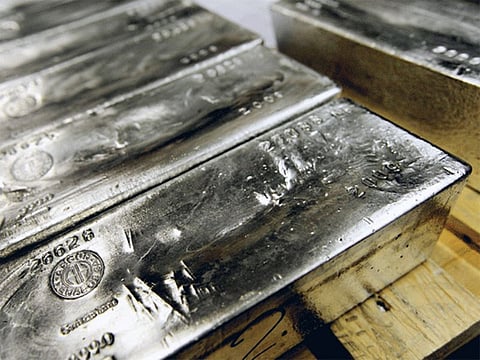Gold too expensive for you? Silver investments are catching up fast
Dual demand from industry and investors propels metal’s strongest run in years

Dubai: For decades, gold has stood unchallenged as the ultimate refuge for investors when markets wobble. But this year, as global uncertainty persists and industrial demand tightens supplies, its less glamorous sibling is quietly closing the gap. Silver prices have rallied faster and harder than gold’s, sparking a debate among traders and analysts over whether it could one day replace gold as the world’s preferred safe-haven asset.
Both metals have surged in recent months due to weakening yields and persistent fears about global debt levels. According to Daniela Sabin Hathorn, Senior Market Analyst at Capital.com, the rally reflects a broad move away from fiat currencies. “Precious metals have been on a tear in recent weeks as the debasement trade, diversifying away from fiat currencies such as the US dollar, gathers momentum,” she said. “Ongoing US fiscal and political uncertainty has added to haven demand, while a drop in real yields, driven by expectations of continued monetary loosening from the Federal Reserve, has further supported prices.”
In September alone, gold rose about 12%, while silver surged nearly 17.5%, its best monthly performance since the pandemic. The gold-to-silver ratio, a measure of relative value between the two, has steadily declined since May, confirming silver’s outperformance.
Silver’s edge lies in its dual personality. “Unlike gold, it’s a key industrial input, particularly across solar, electronics and electric vehicles, linking its price more directly to the health of the global economy,” said Hathorn. “With risk appetite buoyed by resilient US data, the blend of safe-haven interest and pro-cyclical demand has tilted the field in silver’s favour.”
That dynamic is reinforced by rising investment in AI and electrification. “Stronger returns across the AI complex have improved sentiment toward industrial metals tied to data centres and power infrastructure,” Hathorn said. Silver plays a critical role in the circuitry of renewable energy systems, semiconductors and EV manufacturing. Tight supply from limited mining activity and weak recycling infrastructure has only magnified the rally.
Is silver a safe haven?
Ole Hansen, Head of Commodity Strategy at Saxo Bank, said the physical market is now showing signs of stress. “The London silver cash market has entered a period of pronounced stress. One-month lease rates have spiked sharply amid surging demand from major global trading hubs, while available inventories remain limited,” he said. “The imbalance hints at further upside potential since, ultimately, physical fundamentals dictate price direction.”
Hansen noted that the gold-to-silver ratio has already dropped below its ten-year average, suggesting silver is no longer cheap relative to gold. Over the longer term, the combination of recurring supply deficits and industrial expansion could sustain silver’s strength.
For now, few expect silver to dethrone gold’s safe-haven status. But the metal’s growing industrial relevance and constrained supply make it a unique bridge between defensive and growth assets, a “dual engine,” as Hathorn calls it. In an era defined by electrification and AI, that engine may keep silver’s shine from fading anytime soon.
Sign up for the Daily Briefing
Get the latest news and updates straight to your inbox



